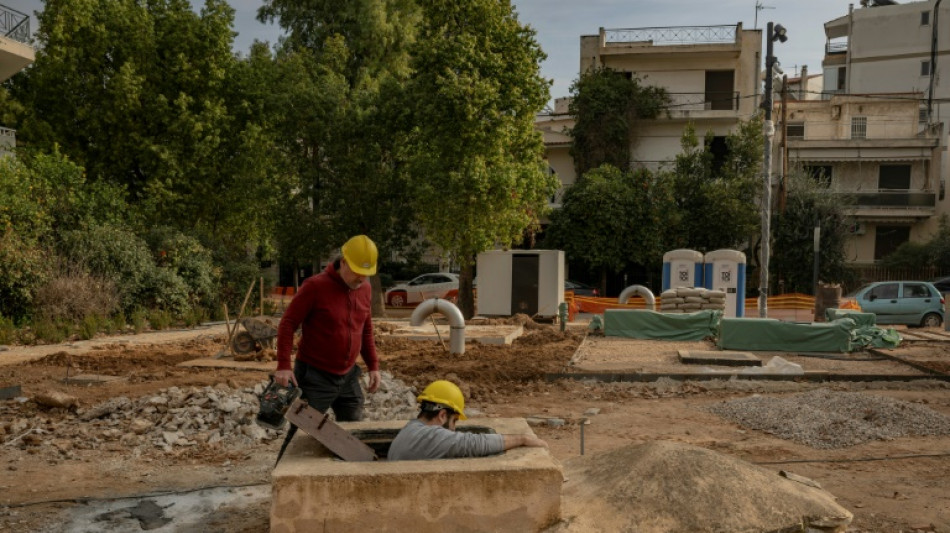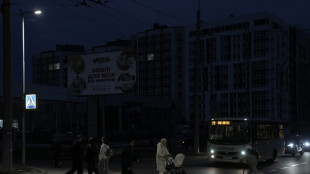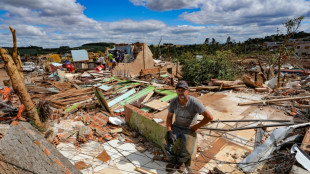
-
 Erasmus' ingenuity sets South Africa apart from the rest
Erasmus' ingenuity sets South Africa apart from the rest
-
Asaji becomes first Japanese in 49 years to win Singapore Open

-
 Vingegaard says back to his best after Japan win
Vingegaard says back to his best after Japan win
-
Philippines evacuates one million, woman dead as super typhoon nears

-
 Ogier wins Rally Japan to take world title fight to final race
Ogier wins Rally Japan to take world title fight to final race
-
A decade on, survivors and families still rebuilding after Paris attacks

-
 Russia's Kaliningrad puts on brave face as isolation bites
Russia's Kaliningrad puts on brave face as isolation bites
-
Philippines evacuates hundreds of thousands as super typhoon nears

-
 Syrian president arrives in US for landmark visit
Syrian president arrives in US for landmark visit
-
Cyndi Lauper, Outkast, White Stripes among Rock Hall of Fame inductees

-
 Fox shines in season debut as Spurs down Pelicans, Hawks humble Lakers
Fox shines in season debut as Spurs down Pelicans, Hawks humble Lakers
-
New Zealand edge West Indies by nine runs in tense third T20

-
 Messi leads Miami into MLS playoff matchup with Cincinnati
Messi leads Miami into MLS playoff matchup with Cincinnati
-
Ukraine scrambles for energy with power generation at 'zero'

-
 India mega-zoo in spotlight again over animal acquisitions
India mega-zoo in spotlight again over animal acquisitions
-
Messi leads Miami into MLS Cup playoff matchup with Cincinnati

-
 Tornado kills six, injures 750 as it wrecks southern Brazil town
Tornado kills six, injures 750 as it wrecks southern Brazil town
-
Minnesota outlasts Seattle to advance in MLS Cup playoffs

-
 Marseille go top in Ligue 1 as Lens thrash Monaco
Marseille go top in Ligue 1 as Lens thrash Monaco
-
Fourteen-man South Africa fight back to beat France

-
 Atletico, Villarreal win to keep pressure on Liga giants
Atletico, Villarreal win to keep pressure on Liga giants
-
Chelsea down Wolves to ease criticism of Maresca's rotation policy

-
 England's Genge eager to face All Blacks after Fiji win
England's Genge eager to face All Blacks after Fiji win
-
Wasteful Milan draw at Parma but level with Serie A leaders Napoli

-
 Fire kills six at Turkish perfume warehouse
Fire kills six at Turkish perfume warehouse
-
Djokovic pulls out of ATP Finals with shoulder injury

-
 Rybakina outguns world No.1 Sabalenka to win WTA Finals
Rybakina outguns world No.1 Sabalenka to win WTA Finals
-
Norris survives a slip to seize Sao Paulo pole

-
 Sunderland snap Arsenal's winning run in Premier League title twist
Sunderland snap Arsenal's winning run in Premier League title twist
-
England see off Fiji to make it nine wins in a row

-
 Australia connection gives Italy stunning win over Wallabies
Australia connection gives Italy stunning win over Wallabies
-
Arsenal winning run ends in Sunderland draw, De Ligt rescues Man Utd

-
 Griezmann double earns Atletico battling win over Levante
Griezmann double earns Atletico battling win over Levante
-
Title-leader Norris grabs Sao Paulo Grand Prix pole

-
 Djokovic edges Musetti to win 101st career title in Athens
Djokovic edges Musetti to win 101st career title in Athens
-
Rybakina downs world No.1 Sabalenka to win WTA Finals

-
 McKenzie ends Scotland dream of first win over New Zealand
McKenzie ends Scotland dream of first win over New Zealand
-
McKenzie stars as New Zealand inflict heartbreak upon Scotland

-
 De Ligt rescues Man Utd in Spurs draw, Arsenal aim to extend lead
De Ligt rescues Man Utd in Spurs draw, Arsenal aim to extend lead
-
Kane saves Bayern but record streak ends at Union

-
 Bolivia's new president takes over, inherits economic mess
Bolivia's new president takes over, inherits economic mess
-
Edwards set for Wolves job after Middlesbrough allow talks

-
 COP30: Indigenous peoples vital to humanity's future, Brazilian minister tells AFP
COP30: Indigenous peoples vital to humanity's future, Brazilian minister tells AFP
-
Marquez wins Portuguese MotoGP sprint race

-
 Saim, Abrar star in Pakistan's ODI series win over South Africa
Saim, Abrar star in Pakistan's ODI series win over South Africa
-
Norris extends title lead in Sao Paulo GP sprint after Piastri spin

-
 Man Utd have room to 'grow', says Amorim after Spurs setback
Man Utd have room to 'grow', says Amorim after Spurs setback
-
Tornado kills six, wrecks town in Brazil

-
 Norris wins Sao Paulo GP sprint, Piastri spins out
Norris wins Sao Paulo GP sprint, Piastri spins out
-
Ireland scramble to scrappy win over Japan


Arid Athens turns to ancient aqueduct as climate crisis bites
Between parked cars in a suburban street in Athens, workers fix a pump to an ancient stone well that in turn accesses an aqueduct built almost 2,000 years ago.
The Greek capital, one of Europe's hottest and most densely populated cities, is going to great lengths -- and depths -- to battle soaring summer temperatures and creaking infrastructure.
Officials are tapping European Union money to help restore access to Hadrian's Aqueduct, a 24-kilometre (15-mile) underground channel named after the Roman emperor who funded its construction in the year 140.
It is hailed by experts as an "engineering marvel".
Last year, public utility company Eydap repeatedly warned Athenians they needed to save drinking water as reserves shrank.
Eydap's Katerina Apostolopoulou, who manages the project in the Chalandri suburb, around 10 kilometres from central Athens, said the water would not be of drinking quality and instead would be used "to clean or to irrigate parks and gardens" in summer.
She pointed out that Athenians would normally need to use the drinking water network for their gardens and parks, so she hoped the new pump would help save the valuable resource.
- War shelter -
The aqueduct, which begins at the foot of Mount Parnitha, is fed by an aquifer, explained geologist Yannis Dafnos.
A gentle slope from the mountain helps the water flow down naturally into the city centre.
The Chalandri well is more than 20 metres deep and part of a network of 300 ancient wells, Dafnos said as he lifted the heavy iron cover.
George Sachinis, Eydap's director of strategy and innovation, called the aqueduct an "archaeological and engineering marvel".
He urged planners to use it to create more green spaces in a city hit hard by the climate crisis.
"It is one of the most important ancient aqueducts in Europe," he said.
The aqueduct helped supply the city for hundreds of years but fell into disuse after the Roman era.
Athenians began to reuse it at the end of the 19th century but it was abandoned again after two dams were constructed near the city.
During the Nazi occupation (1941-1944) and then the ensuing Greek civil war, one of the Chalandri wells that it is now dry was used as a shelter, said Christos Giovanopoulos, who heads Cultural Hidrant, a heritage management project at Chalandri town hall.
The restoration project is part of "the promotion of sustainable development in Athens", he said, adding that water was often wasted.
- 'Collaborates with nature' -
He said the Chalandri project aimed to promote green spaces and improve the microclimate through water recycling, while highlighting the archaeological and cultural importance of the entire monument.
A few years ago, Chalandri residents had to zigzag to avoid the well, which at the time was located in the middle of the street, Giovanopoulos said.
Now, the northern Athens suburb will be the first of eight municipalities in the Athens region to benefit from the reuse of the aqueduct's water.
An adjacent dry well has been fitted with a ladder to allow visitors to descend and view parts of the ancient conduit.
The aqueduct eventually reaches the centre of Athens at the foot of Lycabettus Hill, once the site of a Roman reservoir.
Only a few parts of the original reservoir construction remain. The existing structure with stone columns and arches is largely a reconstruction from the nineteenth century.
At the very bottom, in the ancient canal, "a few parts of the roof built by the Romans to prevent rocks from falling into the aqueduct remain", Sachinis said.
"It is an elegant piece of infrastructure that respects and collaborates perfectly with nature," he said.
"Thanks to this aqueduct, there are plans to create more green space around the original reservoir", he added.
Y.Aukaiv--AMWN

